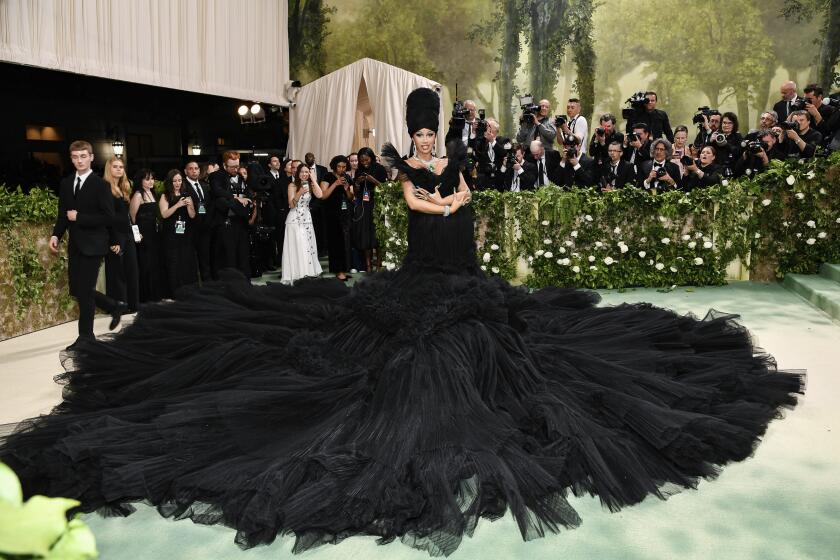Paying Big Bucks for Costume Jewelry
Imitation or costume jewelry has been made for centuries. While royalty wore diamonds and rubies, the average person could only afford rhinestones and glass. Before the late 19th century, costume jewelry was made to simulate precious-stone jewelry.
Celluloid, the first plastic, was introduced in 1868. It was originally developed as a replacement for ivory to be used for billiard balls. The designers soon realized celluloid could be molded, colored and formed into many decorative pieces.
At first, celluloid was colored to resemble horn, ivory, amber and tortoise shell. By the 1920s, blue, green, yellow, purple and other colors were used to make Art Deco jewelry. It was unlike any precious-stone pieces.
Other plastics--such as Galalith, made from skim-milk protein, and Bakelite, introduced in 1908--became popular with designers.
Today some plastic jewelry sells to collectors for more than precious-stone and gold jewelry. A 1920s Art Deco necklace could fetch more than $1,000.
*
Question: We found an old, black, No. 12 Remington typewriter in my great-uncle’s attic. It’s in good shape, and the keys and return work. How old is it? Do people collect old typewriters?
*
Answer: Collectors of antique office equipment do buy old typewriters. Remington made its first commercially successful typewriter in 1878. Its No. 12 model was introduced in 1922. Any Remington newer than a No. 10, first made in 1908, is not as sought-after by collectors as older models. A No. 12 recently sold for $73.
*
Q At a local flea market, I bought a set of china dishes with a wide yellow border surrounding a small bouquet of flowers on a white background. The edge of the plate is painted gold. There is a mark on the back showing two wings emerging from the bottom of a crown. Above the crown are the words, “Tuscan Fine English Bone China.” Under the crown are the words, “Made in England.” How old are the dishes?
*
A Your dishes were made sometime between 1947 and 1966. The mark you describe was used by a Staffordshire porcelain company called R.H. & S.L. Plant, which started producing in 1898. The company’s factory in Longton, England, was known as the Tuscan Works. “Tuscan” became the firm’s trade name.
*
Q My adult daughter isn’t interested in a shoe box full of old greeting cards stored in a bureau drawer since the 1950s. Now I’m wondering if we should toss them.
*
A Don’t throw them out! Like old postcards, old and even not-so-old greeting cards sell at antiques malls, flea markets and on the Internet. Cards with colorful, imaginative graphics or those picturing well-known cartoon characters are the best. Collectors don’t even mind if there are signatures inside the cards. Most vintage greeting cards made after 1940 sell for under $5.
(BEGIN TEXT OF INFOBOX / INFOGRAPHIC)
Current Prices
Figures are recorded from antiques shows, flea markets, sales and auctions throughout the United States. Prices vary because of local economic conditions.
* Griswold waffle iron, size No. 4, square, blue porcelain base, “Favorite Piqua Ware,” circa 1916-1935, $125.
* NBC News Zippo lighter, logo printed on white enamel, polished finish, table, 1979, 4 inches, $210.
* Trifari enameled tulip brooch, light-blue and clear rhinestones, 1940s, 1 3/4 by 2 3/4 inches, $245.
* Davy Crockett wristwatch, U.S. time, 1954, horn case, $385.






